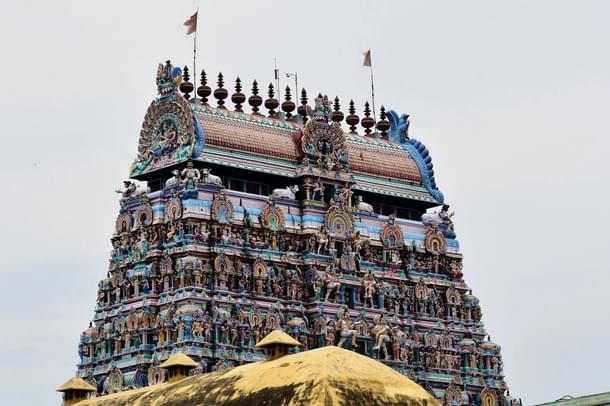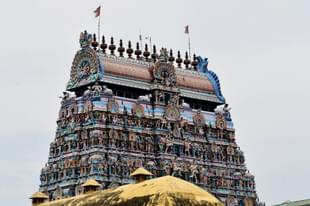Politics
Deekshitars Deserve Dharmic Gratitude, Not 'Dravidianist Loathing'
Aravindan Neelakandan
May 08, 2023, 11:02 PM | Updated May 09, 2023, 10:12 AM IST
Save & read from anywhere!
Bookmark stories for easy access on any device or the Swarajya app.


It is heart-breaking to read a recent interview of Tamil Nadu Governor R.N.Ravi, where he speaks of what the children of Deekshitars have undergone.
In the interview, the Governor talks of how Tamil Nadu state government officials allegedly performed 'virginity tests' on girls belonging to families of the Chidambaram Deekshitars under the pretext of preventing child-marriage. Director General of Police (DGP) C Sylendra Babu has said that the two-finger test was not conducted on minor daughters of Podhu Dikshitars in Chidambaram as part of a probe into child marriages.
The antipathy for Deekshitars is part and parcel of the larger anti-Brahmin agenda that forms a cornerstone of the Dravidianist ideology.
Like all such phenomena, the Dravidianist antagonism for Brahmins also has no rational reason.
What Governor R.N.Ravi has described as having happened to the daughters of Deekishtars is nothing but a result of hate.
(Meanwhile, a set of affluent Brahmins, like the musician T.M.Krishna, have joined the Dravidianist camp, eulogising through music E.V.Ramasamy, who the Dravidianists call 'Periyar').
As for the Deekshitars themselves, one should remember that a set of such Brahmin priests of Chidambaram are well attested in ancient religious literature and history.
Thirumoolar (circa fifth century CE) clearly provides a vital place for Chidambaram and the Cosmic Dance .
Thirugnana Sambandar (seventh century CE) associates Vedic Brahmins with Chidambaram.
Vaishanvaite Aazhwars, Thirumangai Azhwar and Kulasekaraazhwar also have referred to the tradition of three thousand Brahmins of Thillai.
By eighth century, Sundarar sang of himself as the servant of those who serve the Brahmins of Thillai.
According to eminent epigraphist S.Ramachandran, it was the early Chola Kochenkannan of fifth century CE who would have made the tradition of three thousand Brahmin priests of Thillai.
Twelfth century Sekkizhar, fourteenth century Umapathi Sivam, fifteenth century saint Arunagirinathar have all referred to the Brahmins of Thillai.
During the thirteenth century Islamist invasions, Thillai Chidambaram temple became a chief attraction for the invaders.
When the arrested Deekishtars were tortured to reveal the hidden locations of the idols and other valuables, they bravely refused.
The priests were decapitated after torture and others were made to witness the torture and execution before their turn. Yet they refused to reveal the locations of the sacred idols.
Even recently, the idols were recovered from the hidden places, some well within the precincts of the temple. This shows the efficacy with which they hid the idols and also their sacrifice.
Today the Chola bronzes are part and parcel of the great 'Tamizh pride'. Those who take such a pride in Chola bronzes often forget the Brahmin sacrifice in preserving that heritage and passing it onto the present generation.
During 1896-99, the Chidambaram Deekshitas stood as witness in the court favouring the temple entry rights of the Nadar community. In this they earned the displeasure of the British Government. (S.Ramachandran, Shoulder cloth rebellion, South Indian Social History Research Institute, 2010).
Later, when the British tried to take over the temple questioning the continuity of the Deekshita tradition, one of the proofs the Deekshitas produced was a Thirupukazh song of Saint Arunagirinathar.
When Va.Na.Subramania Pillai, a clerical officer heard the song, struck by its melody and devotional depth and beauty, he started searching for the palms of the hymns of Arunagiri which were by then lost and were scattered throughout Tamil Nadu.
Thirupukazh occupies a very important role in what is called today 'Tamizh' music tradition. It would have been lost had not Va.Na. Subramania Pillai heard the hymn sample from Deekshitars. Thus the heritage of Tamil Nadu owes it to Deekshitars, their institution, their sacrifices and their commitment to Dharma.
Unleashing irrational animosity towards such a community belittles Tamil culture, spirituality and tradition. This is neither social justice nor rationalism.
As a matter of caution, no Hindu community should be complacent thinking that it would happen only to the children of Brahmins or Deekshithars.
It is time that Hindu society throughout India unite and raise their voice against what Governor R.N. Ravi has brought out - the inhuman treatment meted out to Brahmin children in Dravidianist land.
Aravindan is a contributing editor at Swarajya.





